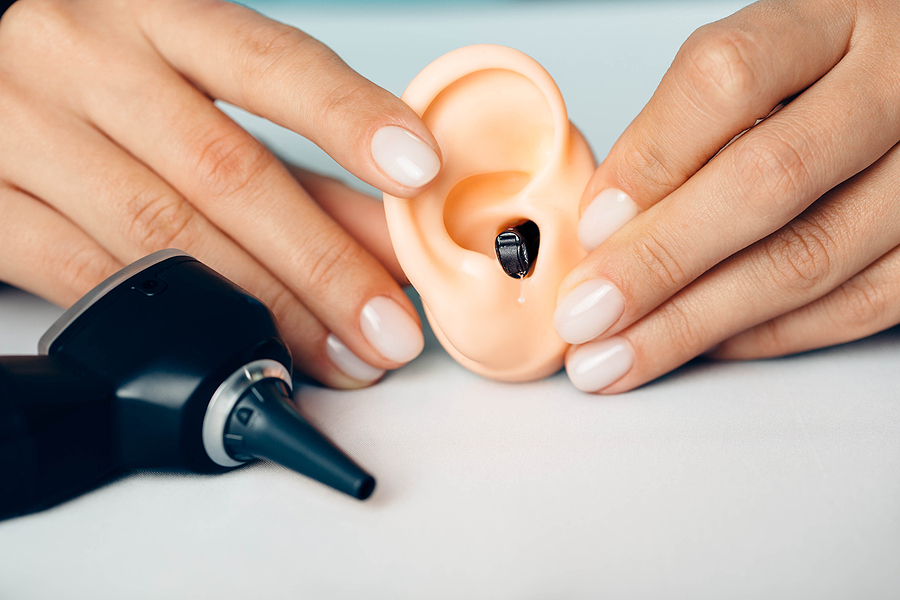The evolution of hearing aids has been marked by triumphs of innovation and technological marvels. From humble beginnings to the sophisticated devices we have today, the history of hearing aids is a testament to human ingenuity and the commitment to enhancing the quality of life for individuals with hearing challenges.
Early Attempts at Amplification (17th-18th Century)
The roots of hearing aids trace back centuries, with the earliest attempts focused on amplifying sound using rudimentary methods. In the 17th century, hollowed-out animal horns, known as “hearing trumpets,” were crafted to gather and direct sound into the ear. While these devices were simple, they laid the groundwork for future innovations in auditory assistance.
A Spark of Innovation: The Acoustic Era (19th Century)
The 19th century marked a significant leap forward with the advent of the “ear trumpet,” a more refined version of its predecessor. These trumpets were often made of brass or other materials and featured a conical shape to capture and funnel sound. Although cumbersome, they represented a shift towards more user-friendly devices.
Electrifying Progress: The Carbon Microphone Era (Late 19th Century)
The late 19th century introduced the concept of electrical amplification, laying the foundation for the modern hearing aid. The carbon microphone, a groundbreaking invention, allowed for the transformation of acoustic signals into electrical currents. Inventors like Miller Reese Hutchison and Thomas Edison explored these principles, leading to the creation of the first electrically amplified hearing aids.
Battery-Powered Revolution: The Vacuum Tube Era (1920s-1940s)
The 1920s witnessed a transformative era with the integration of vacuum tube technology. These small glass tubes, powered by batteries, allowed for more compact and efficient sound amplification. Although these devices were still relatively large and cumbersome, they represented a significant leap in terms of portability and functionality, making hearing aids more accessible.
The Miniaturization Movement: The Transistor Era (1950s-1960s)
The invention of the transistor in the 1950s marked a pivotal moment in the history of hearing aids. Transistors replaced bulky vacuum tubes, enabling a drastic size reduction. This era saw the development of smaller, more discreet hearing aids that could be worn comfortably behind the ear. The transistor revolution made hearing aids more aesthetically pleasing and significantly improved their functionality.
Digital Dawn: The Digital Signal Processing Era (1980s-Present)
The digital age brought about a revolutionary shift in hearing aid technology. The integration of digital signal processing (DSP) in the 1980s allowed for sophisticated signal manipulation, leading to improved sound quality, customization, and noise reduction. Digital hearing aids became programmable, enabling hearing health specialists to tailor settings to individual hearing profiles.
Connectivity and Smart Features: The Present
In the 21st century, hearing aids have evolved into highly advanced, smart devices. The integration of wireless connectivity, Bluetooth technology, and artificial intelligence has transformed the hearing aid experience. Modern devices can connect to smartphones, TVs, and other devices, providing users with seamless integration into their digital lives.
Personalization and Accessibility: A Contemporary Perspective
Today, the emphasis on personalization is stronger than ever. Hearing aids are designed to cater to individual preferences, lifestyles, and degrees of hearing loss. They come in various styles, from discreet in-the-ear models to behind-the-ear devices, ensuring that users have options that align with their comfort and aesthetic preferences.
The Road Ahead: Innovations in Accessibility and Inclusivity
Looking to the future, hearing aids continue improving. Innovations in artificial intelligence, machine learning, and materials science hold the promise of even more advanced, intuitive, and accessible hearing aids. The focus is not just on improving hearing but on enhancing the overall quality of life for individuals with hearing challenges.
Find Your Next Hearing Aids
The history of hearing aids reflects a commitment to innovation and inclusivity. As we celebrate the strides made in hearing technology, we also look forward to a future where hearing aids continue to enrich the lives of individuals around the world.
If you’re ready to find your next hearing aids, book a consultation or hearing test. Together we’ll learn more about your unique hearing needs, talk about your lifestyle, and explore your hearing aid options. We work with the world’s top hearing aid manufacturers, guaranteeing the best in quality and accessibility.

